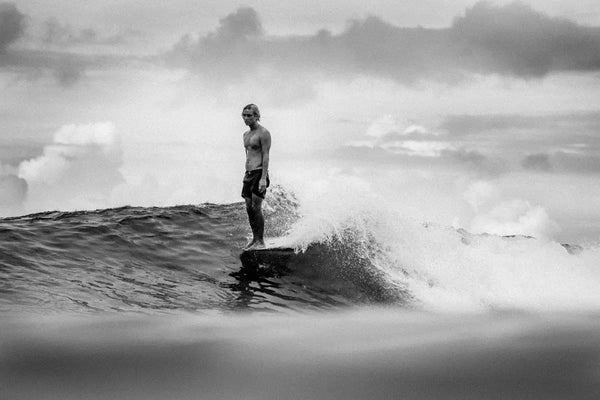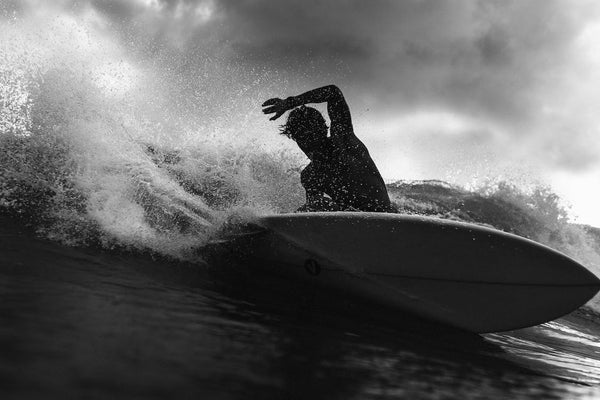The Ultimate Guide in Choosing a Longboard Surfboards
Share
Summary
Choosing the right longboard can be a daunting task, but understanding the different types, materials, size, and features can help. Here's a quick summary:
- Types of longboards: Classic Logs, Performance Longboards, Hybrid Longboards, Beginner Longboards
- Size guide: 9'0" for 100-150 lbs, 9'6" for heavier surfers, 10'0"+ for surfers over 200 lbs
- Factors to consider: Skill level, surfing style, wave conditions, height, weight, fitness level, material (PU or epoxy)
- Riding techniques: Trimming, noseriding, turning, gliding
- Maintenance: Regular cleaning, checking for dings, proper storage, cleaning and lubricating bearings
Once you understand the difference between the different types of longboards, you still have to decide what board is right for you. Choosing the wrong surfboard can negatively affect your surfing experience, because today’s boards are highly specialized, being built for specific styles of surfing and sizes of surfers.

SHOP LONGBOARDS NOW
Choosing the Right Longboard
If you are a beginner, then the best option is likely a user-friendly high-performance board. These tend to be lightweight but still have the volume you need to help you catch waves, and the 2+1 fin setup, modern rockers and bottom contours, and edge in the rails make them easier to turn and more forgiving.
Size Guide for Beginner Surfer:
What are the different styles of longboard available?
Longboard come in various styles to suit different surfing preferences and skill levels. The main types include:
- Classic Logs: Known for their traditional feel, ideal for cruising and catching small waves.
- Performance Longboards: Agile and responsive, designed for advanced maneuvers and riding larger waves.
- Hybrid Longboards: A blend of traditional and performance features, suitable for a wide range of surfers.
- Beginner Longboards: Focused on stability and ease of use, perfect for those new to the sport.
How do high-performance longboards differ from traditional longboards?
High-performance longboards are equipped with contemporary design elements like thinner rails, hard edges, and advanced fin setups, enabling aggressive maneuvers similar to shortboarding. Traditional longboards, or logs, feature heavier glassing, softer rails, and single fins, emphasizing noseriding and smooth trimming.
What factors should I consider when choosing a longboard?
When selecting a longboard, consider your skill level, surfing style, and the wave conditions you'll be facing. Your height, weight, and fitness level also play crucial roles in determining the appropriate size and volume of the surfboard. Additionally, the material of the board, whether polyurethane (PU) or epoxy, can impact its performance and feel in the water.

Once you master basic surfing, you may want to upgrade to a more advanced board. Pro-level high-performance surfboards are lighter, lower in volume, and more sensitive, making them ideal for advanced techniques like barrel rides and aggressive turns. If you want to perform shortboard style turns on a longboard, look for a high-performance longboard designed for intermediate to advanced surfers, suitable for faster breaks and punchy waves.

Riding Techniques and Maintenance
If you would rather spend your time trimming and noseriding in small (knee- to chest-high) peelers and prefer the traditional feel and glide of a heavier single fin, then a traditional noserider/log might be a better choice. These tend to be a bit longer and heavier than high-performance longboards surfboards, and feature softer rails, reversed rocker, and large single-fin setups to provide stability while on the nose.
These traditional noseriders thrive in perfect, long, small peelers, but tend to be more difficult to surf when the waves get into the head-high+ range. Because they are heavily glassed and are lacking a number of modern design elements (such as edge in the rail and a 2+1 fin setup, they are much harder to turn and control, especially when the waves get hollower). That being said, they are specifically designed for noseriding, so if your goal is to spend as much time as possible on the nose, then this is the go.

Finally, if you enjoy the feeling of trimming and locking into the pocket on waist-high waves but aren’t too concerned with noseriding, then a glider or a long keel finned “super fish” might be the best call. These longboards have tons of volume, so they can glide over flat spots and carry their speed, but are quite a bit more difficult to turn than a high-performance surfboard and don’t have the typical characteristics you’d see in a noserider.
Both designs are relatively rare and considered a specialty niche of longboarding, but they provide a completely different feel and the ultimate gliding/trimming experience, so if relaxing on a 10'0"+ board while cruising along in the pocket sounds fun to you, then these are definitely great options.
Regardless of what board you decide to choose, the important thing is to understand what it is made for. While a good surfer can technically ride just about anything in any conditions, generally speaking, you will have a lot more fun if you match your surfboard to the waves.
To address some common questions:
Are there any longboards with included fiberglass fins?
Yes, many longboards come with fiberglass fins included. These fins are celebrated for their flexibility and durability, making them a popular choice across both traditional and performance longboard styles.
Are there any longboards with tinted or clear bottoms?
Longboards with tinted or clear bottoms are available, offering both aesthetic appeal and potential visibility benefits in the water. These design features can be found across various models and brands.
How does the length, width, and thickness of a longboard affect its performance?
The dimensions of a longboard significantly influence its buoyancy, stability, and ease of paddling. Longer surfboards provide better glide and wave-catching ability, while wider and thicker boards offer increased stability, making them ideal for beginners or small wave conditions.
What role does the rocker play in the performance of a longboard?
The rocker, or the curve of the board from nose to tail, affects how the longboard handles on the wave. A flatter rocker improves paddling speed and stability, making it suitable for small waves and noseriding. In contrast, a pronounced rocker enhances maneuverability in steeper waves and supports more aggressive surfing styles.
What are the basic techniques for turning a longboard?
Basic turning techniques involve shifting your weight from the center to the rails and using your back foot to pivot. Smooth, gradual movements are essential for maintaining control during turns.
How can beginners improve their longboard surfing style?
Beginners can enhance their longboard surfing style by practicing balance, learning to read waves, and mastering basic techniques such as paddling, popping up, and turning. Observing experienced surfers and spending ample time in the water are also beneficial.
What are the essential steps for maintaining a longboard?
Maintaining a longboard involves regular cleaning, checking for dings and repairs, and proper storage away from direct sunlight and heat. Additionally, cleaning and lubricating the bearings, if applicable, and using the right tools for adjustments and repairs are crucial for keeping your board in top condition.
If you have any more questions we are here 7 days a week for advice. Happy surfing!!!
SHOP LONGBOARD NOW
More to Read...
📌 How To Choose The Right Fin Size For Longboards?
📌The Unspoken Rules of Longboarding
📌The Difference Between High-Performance Longboards and Logs
📌How to Paddle a Longboard and Navigate Waves

1件のコメント
I have a 9″ × 22 1/2 × 2 5/8 Stewart board and am trying to figure out what size center fin I should get. I will be running a 2+1 set up using NVS G&S Speed Bites. I am 6" and 171 lbs. I ride every thing from 2ft washout to 7ft w/ single overhead in CA. Any help will be greatly appreciated. Thank you and have a Merry Christmas!!!